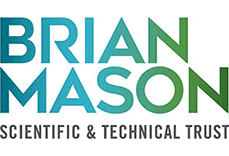
Māori Name
Tawaki
Scientific Name
Eudyptes pachyrhynchus
Other Names Used
Fiordland penguin
 The Fiordland crested penguin, or tawaki, has had its threat classification reduced from ‘Nationally Endangered’ to ‘Nationally Vulnerable’ and most recently to ‘Declining’ as the population is found to be larger than previously thought. However it remains one of the rarest penguins in the world. Endemic to New Zealand, the breeding range for the Fiordland crested penguin is only 500 km from the southern extreme to the northern extreme. Tawaki are more secretive than other, similar sea birds, and their nests are usually well hidden and difficult to access. As a result, they are challenging to study and there is not extensive information available.
The Fiordland crested penguin, or tawaki, has had its threat classification reduced from ‘Nationally Endangered’ to ‘Nationally Vulnerable’ and most recently to ‘Declining’ as the population is found to be larger than previously thought. However it remains one of the rarest penguins in the world. Endemic to New Zealand, the breeding range for the Fiordland crested penguin is only 500 km from the southern extreme to the northern extreme. Tawaki are more secretive than other, similar sea birds, and their nests are usually well hidden and difficult to access. As a result, they are challenging to study and there is not extensive information available.
Like other crested penguins, tawaki lay two eggs each breeding season, 3-6 days apart. Usually only one chick fledges unless food is plentiful and easily accessible. With a large orange beak and yellow eyebrow stripe (the crest), their distinct markings make them readily identifiable. These penguins are particularly at risk from fisheries bycatch, introduced predators and human disturbance.
Fast Facts about Tawaki
- They are 60cm tall, weigh 4kg and have a distinctive yellow stripe from the beak, extending over the eyes and up into a crest.
- They prefer to nest in hollows under fallen trees, roots, boulders or rock crevices, surviving in generally inaccessible forested coastal areas.
- In common with other crested penguins, tawaki lay two eggs, the larger one laid second, hatching first and generally producing the only surviving chick. When food is close by and plentiful, two chicks may be raised.
- Eggs hatch in September and chicks meet up to form a crèche after about three weeks, probably for protection from predators, aggressive adults and or poor weather.
- Adults make short inshore foraging journeys to feed young chicks until they crèche, after which fishing expeditions will be much longer.
- The chicks fledge at around 75 days old in late November or early December and most penguins will have departed to sea by early March, not returning to the colony until late June or early July.
- Adults will return to moult between December and March, replacing all feathers. They are unable to go to sea during this time and are extremely vulnerable to disturbance.
- Adults are known to swim several thousand kilometres between fledging their chicks and the moult. This was established by The Tawaki Project, our Tawaki Coalition partner, and you can read more here.
You can read much more about the tawaki on The Tawaki Project’s web pages, and on NZbirdsonline.
These two handy summaries from DOC in South Westland are excellent resources: DOC Fiordland crested penguin factsheet & DOC Fiordland crested penguin calendar.
Find more about research and conservation needs in this State of Penguins: New Zealand report.
Where do they live?
Tawaki inhabit the southwestern coast lines of New Zealand’s South Island as well as Stewart, Codfish and Solander Island in the South. The northernmost breeding colony is located at Heretaniwha Point at the western end of Bruce Bay in South Westland, while the southernmost breeding pairs occupy nest sites around Port Pegasus at the southern tip of Stewart Island. In Fiordland, they breed on outer coasts and within the fiords.
Unlike all other crested penguin species that breed in well-defined colonies with up to several thousand nests crammed into rather constrained areas, tawaki have evolved to be very secretive birds. Their nests are located in caves, rock crevasses, under tree logs and roots or almost impenetrable vegetation. This, combined with the fact that most of the areas they inhabit are inaccessible coastal forests, explains why we still know very little about the species.
[With thanks to The Tawaki Project]
What are the threats?
Tawaki live with a variety of threats, including the following:
Terrestrial predators
Tawaki would have been hunted for food by the early settlers but then, in the 1800s, the European settlers brought with them a considerable array of predators of native birds, including dogs, cats and stoats.
We believe that big seeding events result in mouse, then rat, then stoat population explosions. Those events can lead to the loss of all chicks in a breeding season where that occurs.
Read more about our project to understand and address this issue here.
Fisheries bycatch – set nets
The industrialisation of fisheries in the 20th century brought with it an ever increasing amount of fishing gear in the water. Particularly, fisheries involving nets have become a substantial threat to seabirds. In New Zealand, one particular type of fishery emerged as one of the worst things that can happen to penguins – and other threatened species in the marine environment – set netting. Set nets consist of a single, stationary net wall that floats upright in the water column. Set nets can be brought out just below the surface, in mid-water or close to the seafloor. And while their main purpose is to catch fish, they are a lethal threat to any marine animal that gets entangled in them and more often than not drowns. Bycatch of marine mammals and seabirds in set nets is a serious problem in New Zealand and it is known that it causes significant mortality in Yellow-eyed penguins.
To which degree set netting impacts on tawaki we don’t know. On one hand, the observer programmes are not believed to deliver reliable estimates of bycatch rates in the regions where penguins are affected. On the other hand, we know very little about the foraging behaviour of tawaki, i.e. if their foraging grounds overlap with set netting regions, whether their diving behaviour makes them likely to end up in set nets. The Tawaki Project has been growing our knowledge of foraging behaviour.
Marine pollution
With mining a traditional commercial activity on the West Coast, tawaki might have to cope with run-off pollution from terrestrial mining operations as well as potential oil spills. Clearer information as to whether tawaki forage in current or future “pollution danger zones” is essential to achieve.
Ocean warming
The world’s oceans are getting warmer. This brings with it substantial change in marine ecosystems and decreasing oceanic productivity. Obviously these changes are likely to affect top marine predators such as tawaki. Yet, it does not need to be all doom and gloom. Despite the reasonably limited range of tawaki, the species inhabits immensely diverse marine habitats. This might be an indication that tawaki are adaptable and able to adjust to new situations.
However, we have no idea whether tawaki can somehow cope with ocean warming. And even if tawaki are super-flexible and can adapt to change, everything has its limit… and the more we know about such limits the more we can do to mitigate reaching this limit.
We do know that, in 2015 with a significant El Niño event affecting marine conditions off the West Coast, few if any chicks survived at the study colony (WCPT and The Tawaki Project) at Jackson Head. The nests failed due to chick starvation, with adults attempting to forage up to 100km away, staying at sea for up to three days. Read the the field report from The Tawaki Project on these findings here.
Where can I see them?
Breeding season – July to November – is the most reliable time to spot tawaki and the most likely location is Monro Beach. Follow the DOC track and sit quietly when you get to the beach – penguins do not come ashore if they see movement on the shore. One of the best places to see them is from cruise boats in Milford Sound.


























